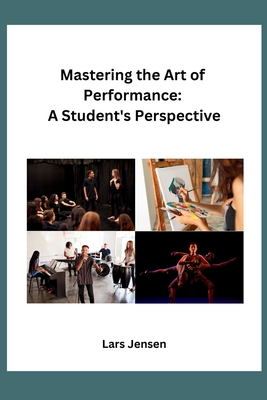You are here
Back to topMastering the Art of Performance: A Student's Perspective (Paperback)
Description
Performance art is a dynamic and captivating form of artistic expression that challenges traditional boundaries of visual arts, theater, and dance. In this subchapter, we will explore the definition and evolution of performance art, shedding light on its historical roots and its significance in contemporary society. Designed specifically for students in the field of Performance Studies, this chapter aims to provide a comprehensive understanding of the art form and its multifaceted nature.
First and foremost, it is crucial to establish a clear definition of performance art. Unlike traditional art forms, performance art is ephemeral, existing only in the moment of its creation. It combines elements of visual art, music, dance, theater, and other artistic disciplines to convey a concept or provoke an emotional response. Performance art often blurs the line between the artist and the audience, encouraging viewer participation and interaction.
The evolution of performance art can be traced back to the early 20th century, where artists began experimenting with unconventional ways of expressing themselves. One of the pioneers of performance art was the Futurist movement, which emerged in Italy in the early 1900s. Futurists embraced technology and the industrial age, incorporating elements of movement, sound, and light into their performances.
In the mid-20th century, performance art gained momentum with the emergence of the Fluxus movement. Fluxus artists rejected the notion of art as a commodity and sought to break down the boundaries between art and everyday life. Their performances often involved absurd and humorous actions, challenging the traditional notions of what constitutes art.
Performance art reached its zenith in the 1960s and 1970s, with artists like Marina Abramovic, Yoko Ono, and Joseph Beuys pushing the boundaries of the art form. Abramovic, known for her endurance-based performances, explored the limits of the human body and the power of vulnerability. Ono's "Cut Piece" invited audience members to participate by cutting off pieces of her clothing, questioning the power dynamics between artist and spectator.
In recent years, performance art has continued to evolve and adapt to the changing social and political landscape. Artists are increasingly using the medium to address issues such as gender, race, and identity, while also incorporating digital technologies into their performances.
Studying performance art provides students with a unique perspective on the power of creativity and its ability to challenge societal norms. By examining the history and evolution of performance art, students gain a deeper understanding of the artistic process and the role of the audience in shaping the meaning of a performance

